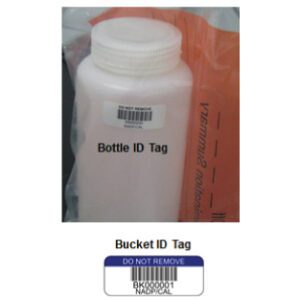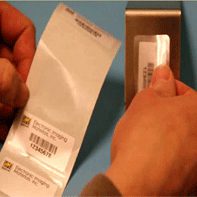
The grass always seems greener on the other side, doesn’t it? Well, in this case, it certainly can be! When it comes to printing inks for your labels, it may seem like color options are rather limited to your standard red, blue, green, yellow, orange, etc. Well, that has all changed now, with the development of UV inks!
You might be thinking to yourself, what the heck are UV inks? What makes them so different than normal printing inks? What IS a normal printing ink?Don’t worry… we’ll explain… it’s not something everyone just knows…we’ve done plenty of research ourselves over the years.
What most people might call “regular” or “normal” printing inks usually refer to water- or solvent-based flexographic (aka flexo) inks. Once printed, these inks air dry or are run through a dryer system, which removes a percentage of the ink through evaporation. But don’t fret, that is all taken into consideration so that the desired color is still achieved by simply laying down a heavier coat weight of ink. For durability, special clear coatings can be added.
Flexographic UV inks, on the other hand, do not dry in the air and are a little thicker than the “regular” aforementioned inks so they look more like a sheet of color than a solution of pigment and water. Once a UV ink is printed, it’s exposed to concentrated UV light which solidifies the ink. Since UV ink is denser, it can result in higher print quality, reduced color bleed and sharper images.
Another benefit of printing with UV ink is its added durability. Acting more like a thin sheet of liquid plastic, UV inks provide excellent rub, chemical and light resistance, along with outstanding color consistency and superior gloss.
As if UV inks don’t seem impressive enough already, it gets even better! Since water or solvent-based inks require more volume (to compensate for the amount of color lost in drying), a lot of ink is wasted in each print run. UV inks, on the other hand, do not dry or “cure” until they’re run through a UV light solidifying the ink so that means that they create less waste in materials, labor and energy.
Now let’s go one more step further from Flexographic UV to Digital UV Inkjet label printing and you now eliminate the need for costly print plates and lengthy changeovers as manufacturing quickly switches from one label design to the next. Label changes can be made instantaneously and you can easily incorporate variable data such as sequential numbering or barcodes. You are also no longer limited by the number of print stations a machine has, which can limit the number of colors you can have printed. An endless variety of PMS colors can be created―on the fly―including pastels or metal-like images. (Just imagine how crisp, sharp artwork can appear when printed against a pastel background…beautiful!) By having the ability to create so many different color combinations, you are gaining much more flexibility with your labels.
Consider this… thermal transfer printing, long known for providing durable label solutions, uses a printing ribbon and a very limited choice of rather intense spot or process colors. On the other hand, UV inkjet lets you print long-lasting photo-quality images in all shades of the rainbow. They are also more durable than either regular flexo inks with special coatings or UV flexo inks and can easily eliminate the need for a protective over-laminate in many cases. Couple UV inkjet with our many resilient label materials and the possibilities are almost endless!





